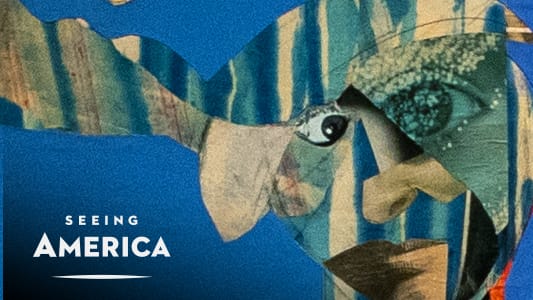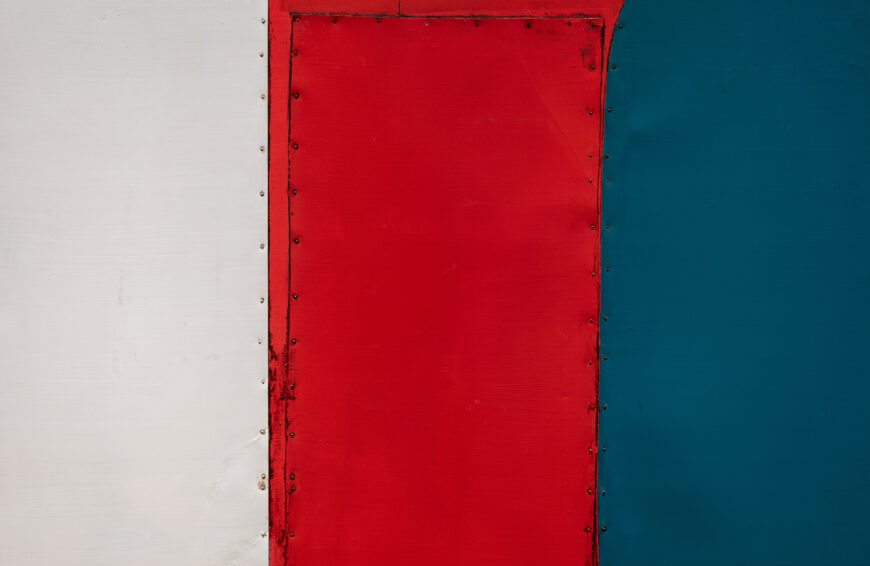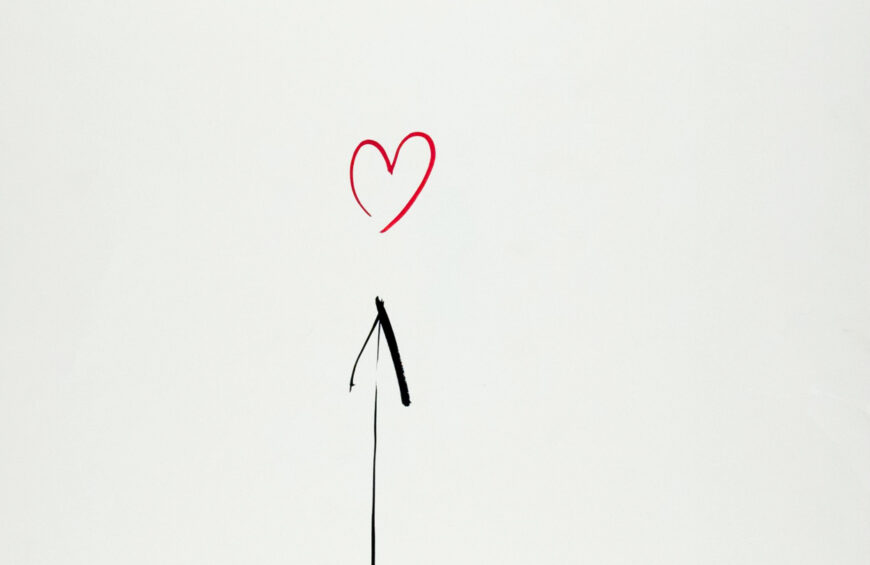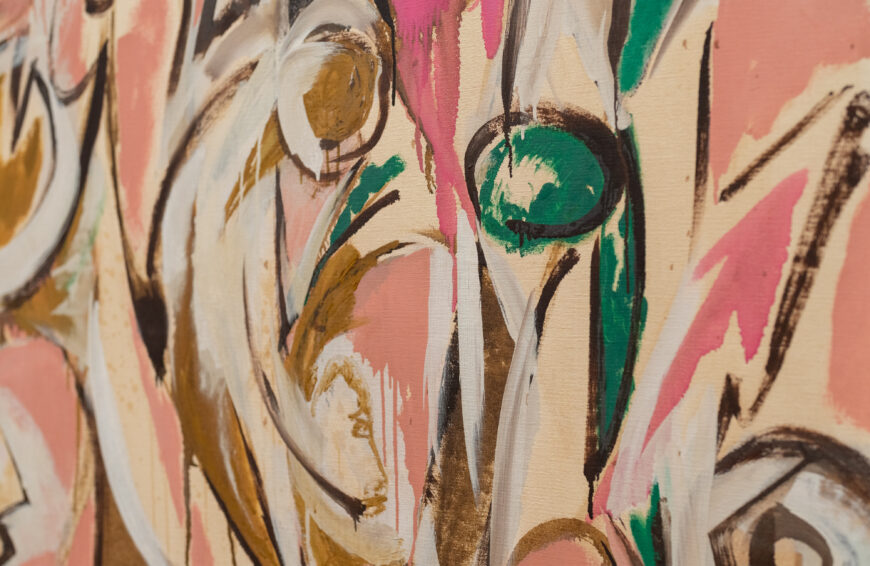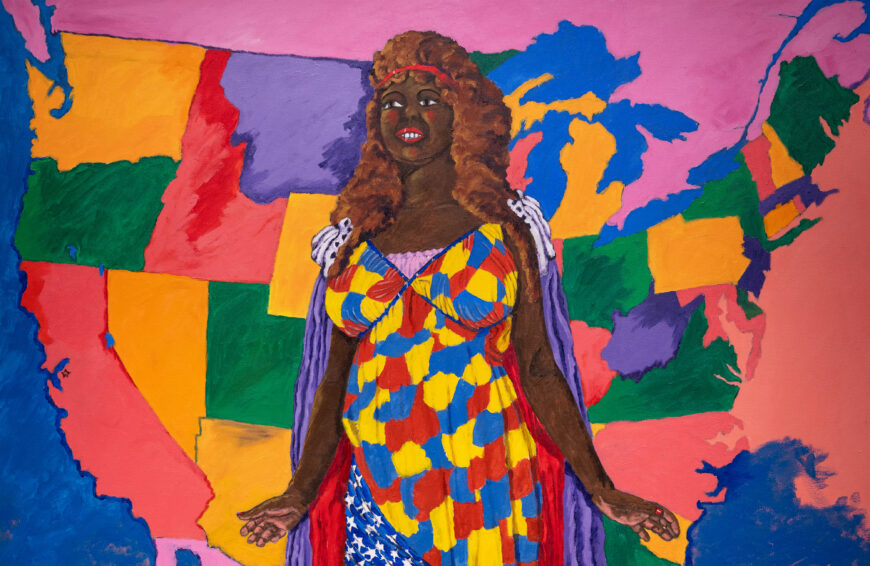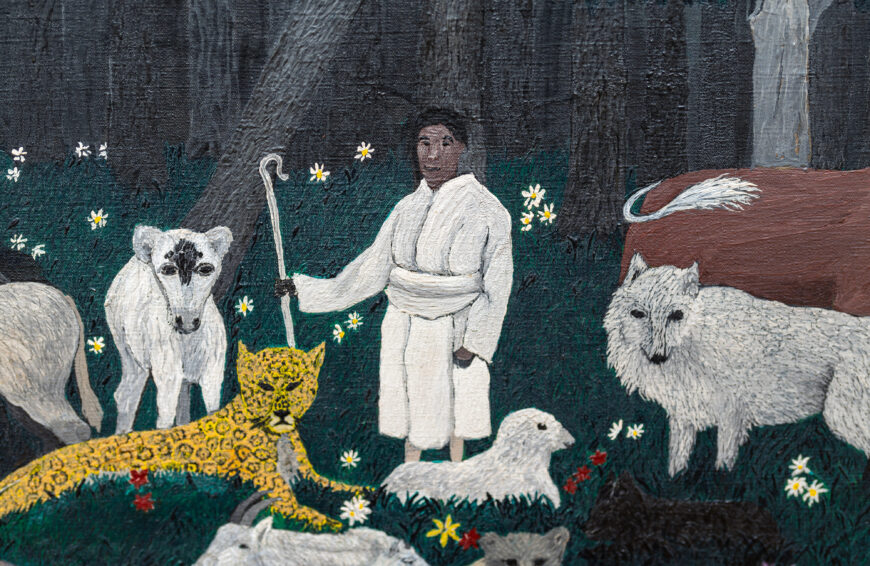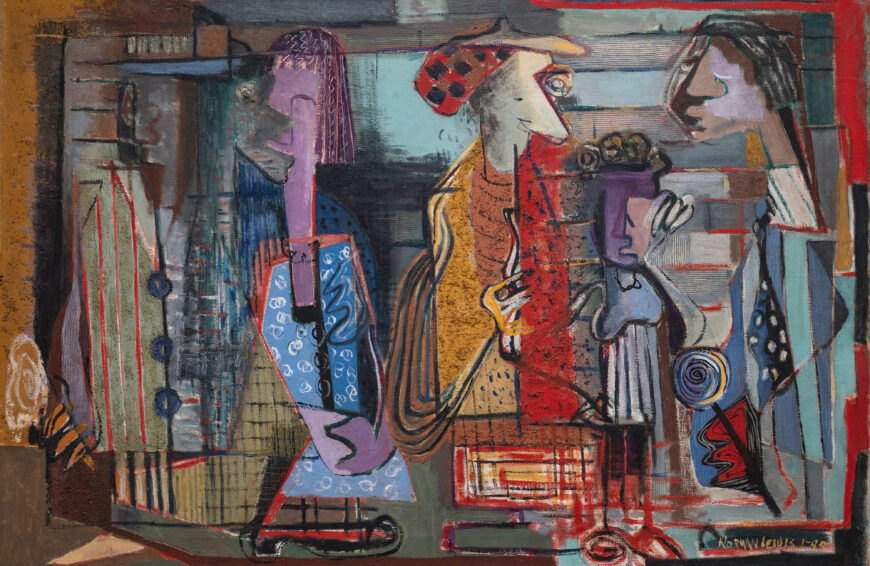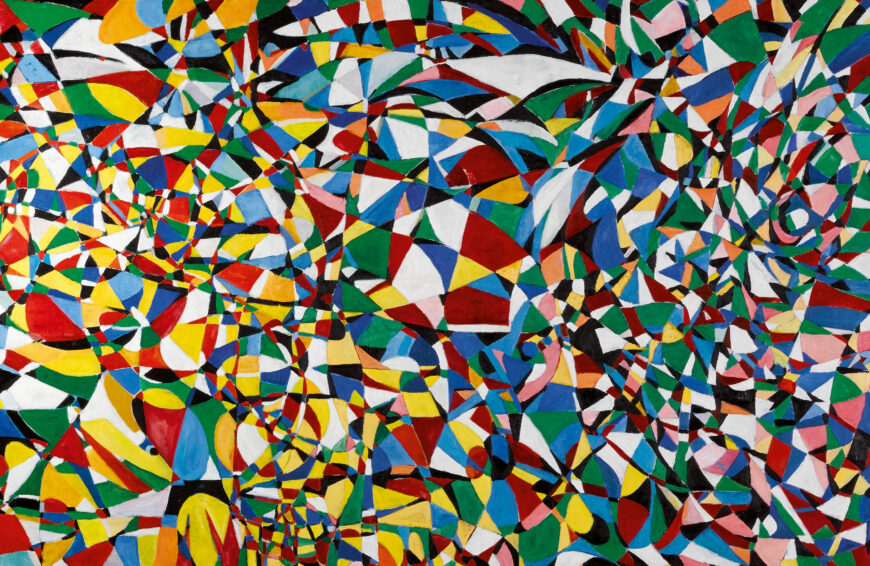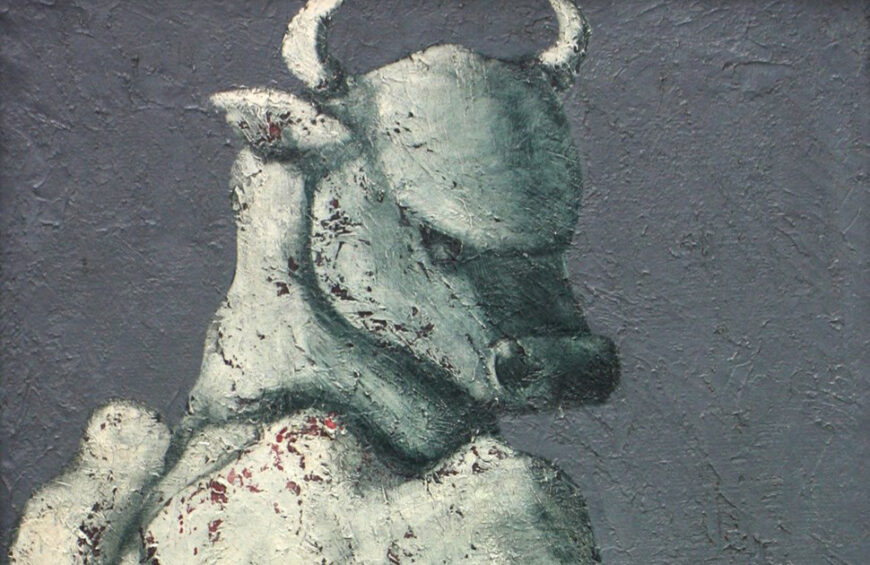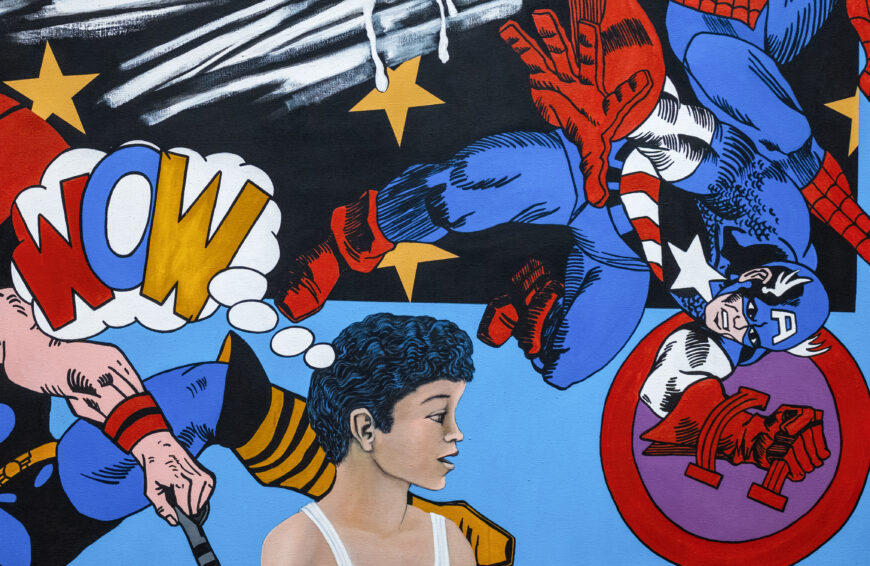Taíno iconography is cleverly incorporated throughout Tufiño’s painting of a couple.
Nitza Tufiño, Pareja Taína (Taíno Couple), 1972, acrylic, charcoal, and polyurethane on Masonite, 123.8 x 122.5 cm (El Museo del Barrio, New York) © Nitza Tufiño. Speakers: Dr. Susanna V. Temkin, Senior Curator, El Museo del Barrio and Dr. Tamara Díaz Calcaño, University of Puerto Rico
0:00:05.4 Dr. Tamara Díaz Calcaño: We are here at El Museo del Barrio in New York, looking at Nitza Tufiño’s Pareja Taína, or Taíno Couple, a square painting where we find two bodies that are very colorful. These are figures that almost have a carnivalesque quality in the way their facial features are represented, almost as mask or harking back to the petroglyphs of the Taíno culture that we find in places like Puerto Rico.
0:00:34.3 Dr. Susanna V. Temkin: I like to think about this in the tradition of couples portraiture, images of kings and queens, or even going all the way back to Egyptian stele with the pharaohs and their consorts, elevating these Taíno figures to that symbolically divine status.
0:00:56.5 Dr. Tamara Díaz Calcaño: Tufiño is related to the founding of Taller Boricua, which is a artist’s workshop that had a very political inclination, where they were very interested in reclaiming Taíno culture in the context of the diaspora. They were very interested in exploring Taíno iconography. We have these very colorful bodies dressed completely in Taíno imagery. The male figure has a symbol in green on his torso, and the figure itself hearkens to Taíno petroglyphs in Puerto Rico, where the coquí frog is represented that way. The way the heads or the mask are designed are also hearkening back to petroglyphs in places like Puerto Rico, which you find in monoliths in caves.
0:01:43.6 Dr. Susanna V. Temkin: I think it’s very interesting how the male, he’s not just wearing a coquí, but the coquí petroglyph defines his anatomy. It defines his chest, his torso. And then his face hearkens back to petroglyphs of the sun god.
0:02:00.0 Dr. Tamara Díaz Calcaño: The nipples are also green in the petroglyph design. Those are the coquí’s eyes. So very much the torso is completely defined by this petroglyph.
0:02:08.6 Dr. Susanna V. Temkin: These are important early moments for Taller Boricua, a printmaking center that was looking to Taíno imagery, Taíno iconography to include in their artwork. These were also early moments here at El Museo del Barrio, where Nitza was involved as an educator. There are early images of El Museo where we see this image hung on a wall. I also think it’s interesting that Nitza was referencing this very hyper local cultural context of being Puerto Rican, being Nuyorican. She was also thinking about the Vietnam War. So she talks about the female figure, how her face, her mask also recalls the images of gas masks that would have been prominent throughout the news from soldiers coming back and forth between Vietnam and the United States.
0:03:05.4 Dr. Tamara Díaz Calcaño: Taller Boricua’s mission was also very much related to political education, cultural education. So a lot of the production is involved with the community in the interest of teaching the community about their heritage, about the political situation in Puerto Rico, about the cultural heritage that comes from being Puerto Rican.
0:03:25.8 Dr. Susanna V. Temkin: Nitza often uses the phrase Neo-Boriken, this idea of a new Boriken, which is the Arawak word for Puerto Rico. And in fact, she extends that title to a piece that she made for the New York City subway mosaics that adopt the same palette that we see here in Pareja Taína, with these almost electric pinks and yellows and oranges and greens.
0:03:53.4 Dr. Tamara Díaz Calcaño: And even the way the paint sets on the skins of the figures on the background, it very much feels like an almost liminal space between the ethereal and the urban of New York.
0:04:04.8 Dr. Susanna V. Temkin: I also love how presente, how present these two figures are. They’re pushed against the picture plane, confronting us like we’re in their presence.


